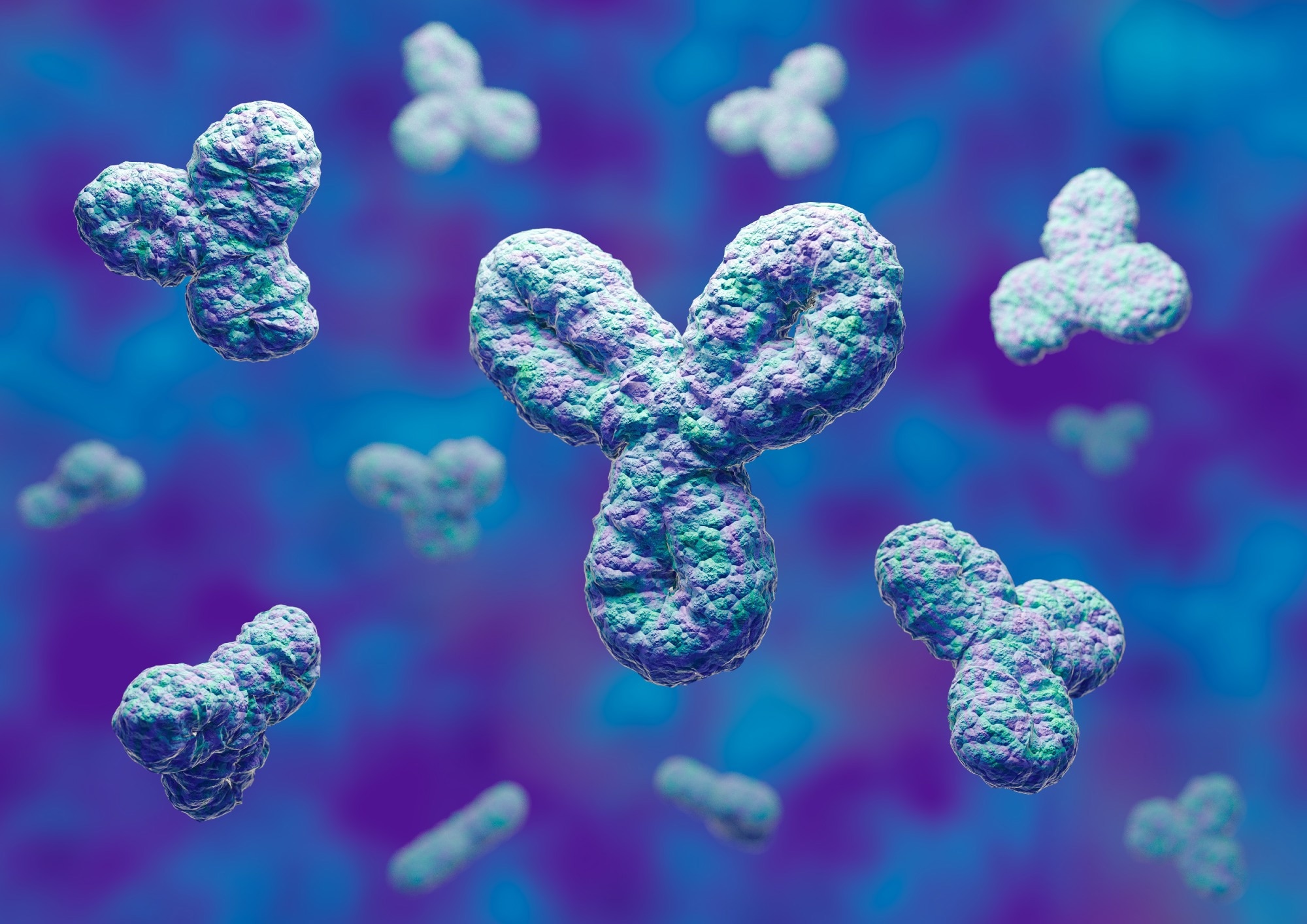In a latest research printed within the Proceedings of the Nationwide Academy of Sciences, researchers developed a completely artificial platform for nanobody technology.
 Examine: Absolutely artificial platform to quickly generate tetravalent bispecific nanobody–primarily based immunoglobulins. Picture Credit score: Adao / Shutterstock.com
Examine: Absolutely artificial platform to quickly generate tetravalent bispecific nanobody–primarily based immunoglobulins. Picture Credit score: Adao / Shutterstock.com
What are nanobodies?
Biologics have been more and more used for the remedy or prevention of viral illnesses. One of many challenges of utilizing antibodies is the potential emergence of resistant viral variants, as exemplified by extreme acute respiratory syndrome coronavirus 2 (SARS-CoV-2) variants that had been absolutely or partially proof against therapeutic antibodies.
Nanobodies acknowledge targets by a single variable heavy (VHH) area. Nanobodies can goal epitopes inaccessible to bulkier antibodies, which require variable mild (VL) and heavy (VH) domains to type the paratope. Nanobodies are generally obtained by immunizing camelids; nevertheless, yeast- and phage-based artificial platforms have additionally been used for de novo discovery.
Monomeric VHH reveals average neutralizing efficiency; nevertheless, putting hetero or homo-nanobodies in tandem can improve their efficiency. Whereas the worth of nanobody combos is well-known, choosing candidate nanobodies requires a priori structural info or screening of constructs for synergistic combos.
Examine findings
Within the present research, researchers develop and validate a human-based nanobody library utilizing SARS-CoV-2 because the check antigen. To this finish, they created an artificial VHH scaffold by incorporating mutations into the VH 3-23 heavy chain gene of people. DNA encoding the nanobody was remodeled right into a yeast floor show vector.
Nanobodies had been effectively displayed on the floor, with round 67% of the library exhibiting floor show. The library was then validated utilizing the receptor-binding area (RBD) of the SARS-CoV-2 spike protein because the check antigen. The library was screened for RBD binders in three rounds of magnetic-activated cell sorting (MACS) and 5 rounds of fluorescence-activated cell sorting (FACS).
Sanger sequencing of the clones from the ultimate FACS spherical revealed excessive library enrichment, which led to the restoration of 4 distinctive clones. These clones had been expressed as His-tagged nanobodies alone or linked to the human fragment crystallizable (FC) area to generate a nanobody fusion protein. Enzyme-linked immunosorbent assay (ELISA) verified the RBD binding of the 4 nanobodies.
Fc-fused nanobodies had been evaluated in a SARS-CoV-2 pseudovirus neutralizing assay. The LM18 nanobody neutralized the pseudovirus with a half-maximal inhibitory focus (IC50) of 66 nM.
Subsequently, the variety of enriched nanobodies and their goal RBD epitopes had been decided. A yeast competitors assay was used to evaluate epitope specificity utilizing three SARS-CoV-2 antibodies, together with CR3022 (class 4), CC12.1 (class 1), and CC6.30 (class 2).
The library was labeled with RBD and incubated with one of many three antibodies. Aggressive and non-competitive populations had been sorted.
After filtering, the researchers recognized 123 distinctive nanobodies and assigned epitope bins. Of those, 100 nanobodies exhibited aggressive binding with one of many antibodies, whereas 13 had been non-competitive.
Six nanobodies competed with CC6.30 and CR3022, whereas the remaining 4 competed with all three antibodies. General, 45 nanobodies had been chosen for additional validation. Of those, twenty-four nanobodies had been binned to the category 4, CR3022-competitive epitope (Nb-C4), and 21 had been binned to the category 2, CC6.30-competitive epitope (Nb-C2).
Subsequent, the workforce aimed to generate bispecific tetravalent nanobody-based immunoglobulins (bsNb4-Igs) by substituting the VL and VH domains with two nanobodies concentrating on distinct RBD epitopes. Nanobodies had been joined to the fixed heavy 1 (CH1) and light-weight (CL) domains. The bispecific constructs had been primarily based on the LM18 nanobody, given its neutralization breadth.
LM18 competed with CC12.1 and CR3022 however not with CC6.30, thus implying that class 2 nanobodies, which solely compete with CC6.30, can exhibit biparatopic RBD engagement with LM18. The authors speculated that class 4 nanobodies, which solely compete with CR3022, would possibly have the ability to have interaction with LM18 concurrently.
Nanobodies with RBD-specific binding and monodisperse size-exclusion profiles had been formatted into bsNb4-Ig with LM18 as the sunshine chain and sophistication 2/4 nanobody because the heavy chain. 13 of the 23 Nb-C4/LM18 bsNb4-Igs and 16 of the 20 Nb-C2/LM18 bsNb4-Igs had 10- to 470-fold improved neutralization than LM18-Fc fusion assemble.
The ten most-potent bs-Nb4-Igs had been assessed for neutralization of SARS-CoV-2 variant pseudoviruses. Initially, the bispecific constructs had been screened for the neutralization of a pseudovirus with single L452R and E484Q level mutations. Seven bispecific constructs neutralized these mutants and had been additional examined towards Beta, Gamma, Kappa, and Delta pseudoviruses.
A number of Nb-C4/LM18 bsNb4-Igs neutralized all variant pseudoviruses with a median 50% inhibitory focus (IC50) of 0.2 nanomolar (nM). Moreover, totally different bsNb4-Igs with class 2 and 4 constructing blocks had been examined.
The Omicron variant was proof against LM18 and all bispecific constructs with this nanobody. Nonetheless, bsNb4-Igs with Nb-C4 on one arm and Nb-C2-136 on the opposite neutralized the Omicron variant.
Conclusions
This novel artificial platform permits the incorporation of particular person nanobodies into an IgG-like scaffold, with the resultant biparatopic constructs exhibiting neutralization equal to canonical antibodies. Furthermore, this method allows additional affinity maturation of every constructing block, thereby rising efficiency. This workflow applies to virtually any protein goal and offers a blueprint for growing multi-specific molecules.
Journal reference:
- Mindrebo, L. M., Liu, H., Ozorowski, G., et al. (2023). Absolutely artificial platform to quickly generate tetravalent bispecific nanobody–primarily based immunoglobulins. Proceedings of the Nationwide Academy of Sciences. doi:10.1073/pnas.2216612120
